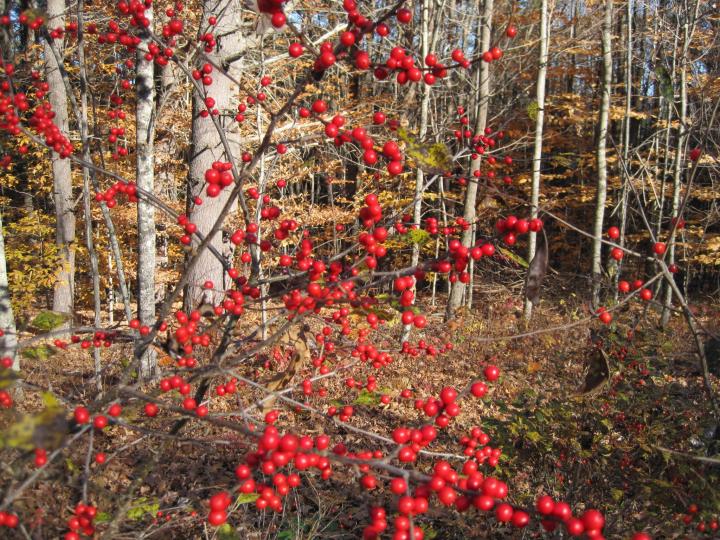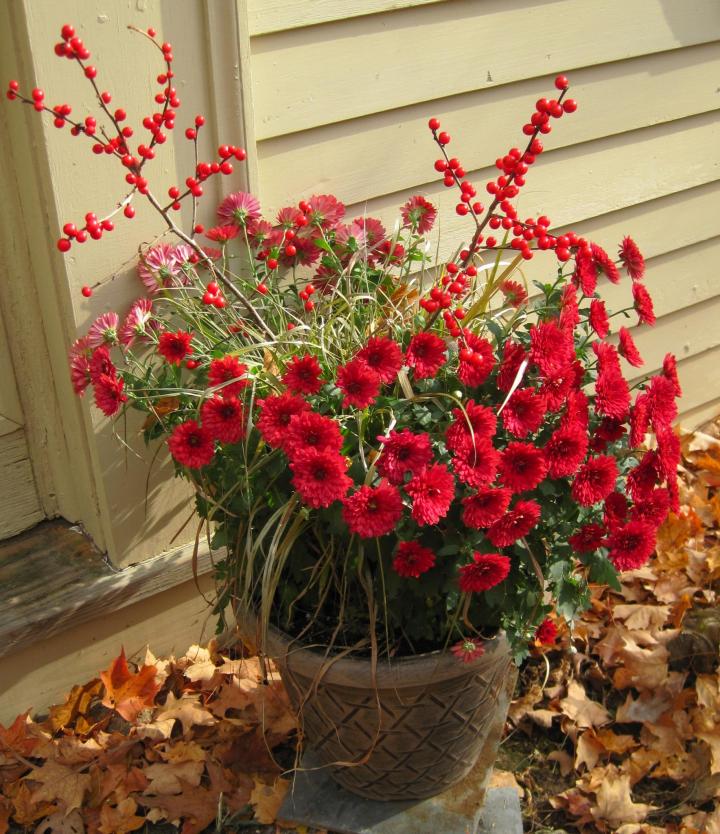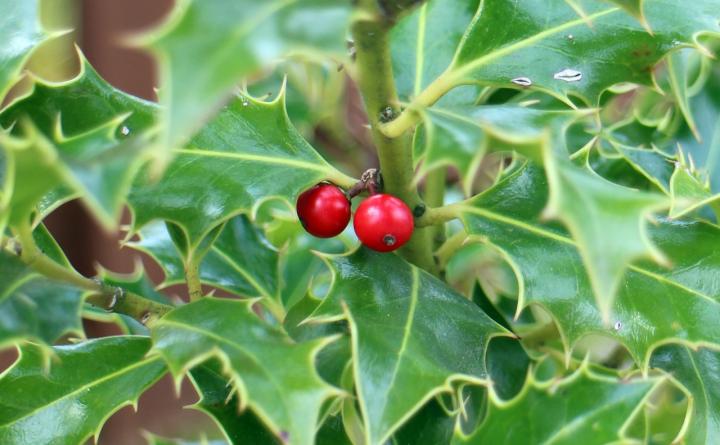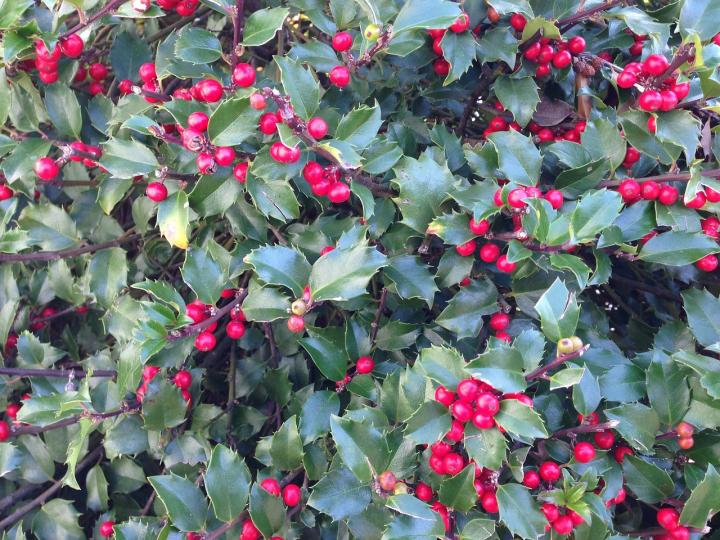It’s that red berry time of year, and with bunches of fresh holly leaves or branches of winterberries going for $5 to $10 apiece, it only makes sense to try growing these winter beauties at home! Here’s what to know about these easy-to-grow shrubs.
Growing Winterberry
Winterberry (Ilex verticillata) is one of several native North American hollies. It grows 5 to 15 feet tall depending on the cultivar and, unlike some other hollies, is deciduous, meaning that it loses its leaves in autumn. Although it does have colorful fall foliage, it is grown mainly for its bright berries.
Winterberry is very cold hardy and will thrive in a wet location, so they can be planted along the edge of a damp woods or streamside. They will grow in part shade but will produce more berries the more sun they get. Most varieties bear red berries, but a few have yellow.

They are excellent for cutting and making holiday decorations. Just a few sprigs of winterberry make the transition from fall to holiday decorating.

Growing English Holly
If you like the evergreen look of classic English holly, there are many cultivars to choose from. The Ilex genus is a large one, with over 400 species native to North America, China, Japan, Europe, and North Africa, and there are thousands of hybrids. They range in size from tiny shrubs to 50-foot-tall, pyramid-shaped trees. They may have glossy leaves in colors such as blue-green, dark green, and even variegated with white or yellow edges.

Great for Birds
Both deciduous and evergreen hollies offer wildlife habitat and are an important source of winter food for birds. Deer also find holly to be a tasty treat and can destroy an evergreen shrub in no time if they are hungry enough.
It Takes Two
Hollies have small greenish-white flowers and the plants are dioecious, meaning that a male and female plant must be present for fruiting to occur. They are pollinated by insects so they need to be within sight of each other and also need to bloom at the same time of year. A good ratio is one male plant for every six females. Only the female plants will have berries.
Plant your holly bushes in fertile, slightly acidic soil. Evergreen varieties like it moist but well-draining, while winterberry can be planted in swampy areas that are under water for part of the year. Holly roots are close to the surface, so mulch them to keep them cool and moist.

Holly Through the Ages
The use of holly in holiday celebrations began long ago.
- Ancient Romans gave holly to their friends during Saturnalia, a late December harvest festival. It was hung in their homes as a charm to protect them against evil spirits.
- In Great Britain the druids decorated their homes at the winter solstice with holly as a symbol of the renewal of life and light.
- Walking sticks made of holly wood were popular into the 19th century as protection against mad dogs and wild animals.
- It was also believed that the planting of holly next to the house would not only ward off evil spirits but protect against lightning bolts!
There are many reasons to place holly high on your wishlist of plants for next season.
Happy Holly Days!














Comments